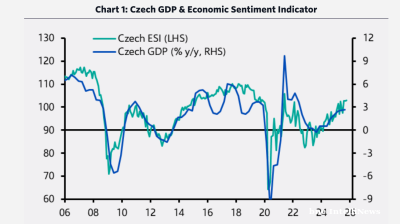The arc of history is turning. For the first time since the Industrial Revolution, the major emerging economies including China, India and Indonesia have seen GDP as a percentage of the UK’s GDP sharply increase as the leading BRICS countries overtake the Developed Markets in PPP (purchase power parity) adjusted terms, according to the latest Maddison 2020 database data.
The reversal is part of the global shift in economic weight from the Global North to Asia. In 1750, on the eve of industrialisation, China and India’s incomes stood at roughly 35–40% of Britain’s, despite those countries having massively larger populations, while Indonesia was not far behind.
As Europe’s industrial revolution gathered pace, that ratio collapsed. By the early 20th century, the average Chinese or Indian earned barely a tenth of a Briton’s income. By 1950, the figure was closer to 5%.
For nearly two centuries, the story was one of divergence as the Global North bled the Global South of wealth in the form of human capital under the colonial system. That model got an update in the post-WWII era under the term “globalisation” but it is starting to unravel in this millennium as the so-called Emerging Markets emerge.
From the late twentieth century onwards, the curve turned upwards again. China’s post-1978 reforms and export-driven industrialisation ignited the fastest sustained growth in modern history. India’s 1991 liberalisation and Indonesia’s steady expansion through the commodities boom of the 2000s added to the momentum. By 2023, China’s GDP per capita had risen to around 40–45% of the UK’s level, Indonesia’s to about a third, and India’s to nearly one-fifth.
In adjusted terms, the rebalancing is even more pronounced. As bne IntelliNews recently noted, the BRICS nations together now account for around 31.5% of global GDP and over 42% of the world’s population. The group’s combined economic output has already surpassed that of the G7 when measured by PPP, and last year Russia overtook Japan to become the fourth largest economy in the world in PPP terms. Out of the top five largest economies in the world, three of them are now BRICS, with China in first place in PPP terms. Both China and India are set to overtake the US in nominal terms too by around 2070.
“Over the past two decades the BRICS nations have experienced rapid economic growth and development,” bne IntelliNews reported in an article on the “Rise of the BRICS” — a shift that has redrawn the world’s economic map.
Rising relative income levels translate into expanding domestic markets, deeper capital pools and growing geopolitical influence. At the same time that has weaned the leading Global Emerging Markets (GEMs) off their addiction to foreign direct investment (FDI) and exports to the developed world as internal demand increasing provides the engine for growth.
China’s economic ascent has already reshaped global supply chains and energy flows. As bne IntelliNews reported, in just the last year, the US increasingly sees China as an equal, not a global rival, as it gives up any hope of besting it in either economic or geopolitical power.
India is further behind, but as the largest democracy in the world and pouring investment into bootstrapping its economy, it is arguably now catching up even faster than China, especially in technology and services. Indonesia, by far the most populous country in SE Asia after China, has long been overshadowed by its Asian neighbours, but now is emerging as a key consumer market as well as supplier of nickel and other critical minerals for the green transition. Notably at the BRICS summit two years ago it dithered, sitting on the fence, but finally took the plunge this January, choosing to throw in its lot with the leading Emerging Markets to become a fully-fledged member of the BRICS+.
Britain remains one of the world’s richest economies on a per-capita basis, but it’s losing its place as a global power after its growth rate has fallen to below those of its more dynamic peers in the Global South in recent decades. Shockingly, the birthplace of the industrial revolution was pushed out of the global top ten manufacturing nations by both Russia and Mexico in 2022, driven by increased defence production in Russia and Chinese investments in Mexico.
Still, the pace of convergence varies. China’s demographics are turning less favourable, India’s infrastructure gap remains large, and Indonesia must deal with its reliance on resource exports. Yet the direction of travel is clear. The “great divergence” that defined the 19th and 20th centuries is giving way to a slow, uneven convergence that is already reordering global influence. As bne IntelliNews reported, the advent of Trump’s new economic paradigm based on a mercantile transactional world view, coupled with the geopolitical East-West clash associated with Russia’s war in Ukraine and pushed the Global South to rapidly build up a set of Global Emerging Markets Institutions (GEMIs) to counter the West’s dominance of global institutions.
After two centuries of Western decline and Europe’s failure to address the competitive short fall highlighted in the Draghi report released last year, the economic centre of gravity is tilting back east.
Data
__8_1762244759.png)
Russia automotive output slumps to levels of first months of Ukraine war as demand slumps
Russia’s automotive industry — once a symbol of the country’s industrial ambitions — has entered another sharp downturn, reversing the fragile recovery seen in 2023 and early 2024.

October PMI shows Kazakhstan’s manufacturing declined for fifth consecutive month
Renewed fall in new orders. Some firms point to difficulties receiving goods via stringent Russian customs checks.

October PMI shows little light at end of tunnel for Turkish manufacturing
Currency weakness and subdued demand plague producers in 19th consecutive month of contraction.

Uzbekistan’s annual inflation edges down to 7.8% in October
Lowest reading posted since 2017. Central bank's year-end forecast is 8%.




